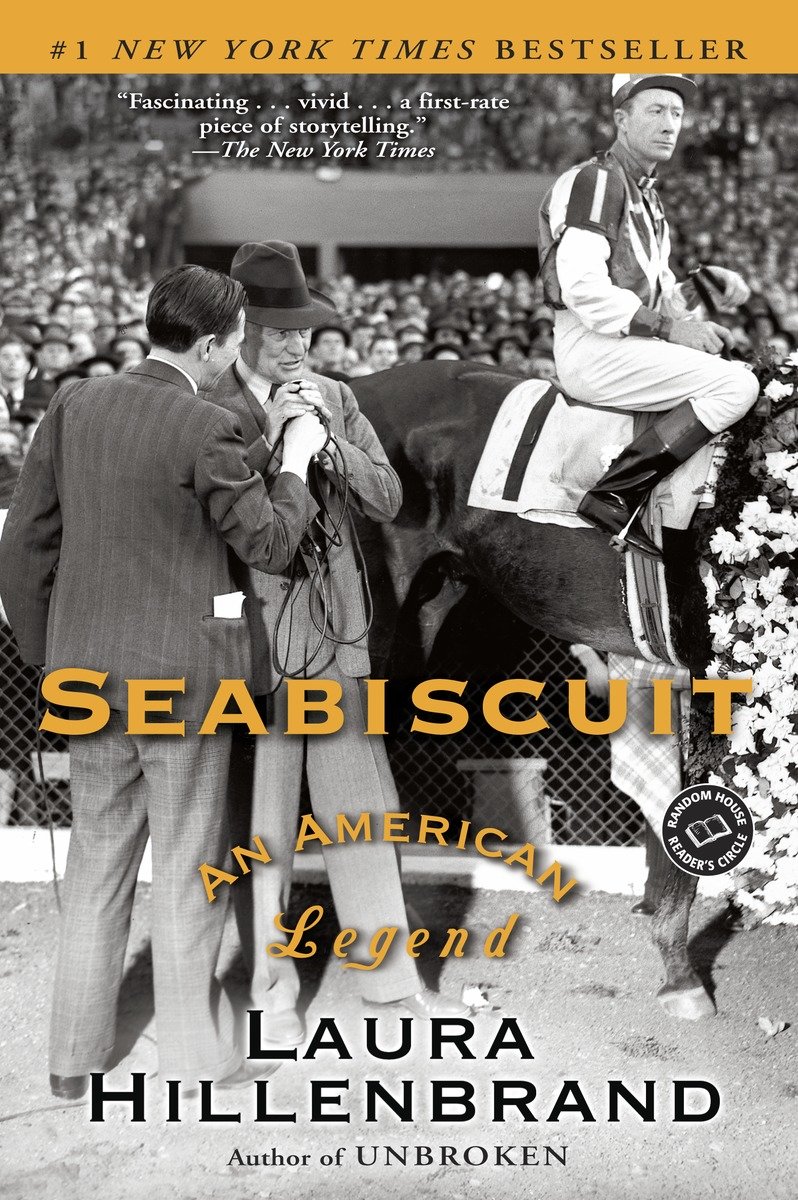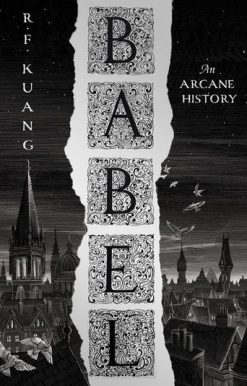Seabiscuit: An American Legend
16.00 JOD
Please allow 2 – 5 weeks for delivery of this item
Add to Gift RegistryDescription
#1 NEW YORK TIMES BESTSELLER • From the author of the runaway phenomenon Unbroken comes a universal underdog story about the horse who came out of nowhere to become a legend. Seabiscuit was one of the most electrifying and popular attractions in sports history and the single biggest newsmaker in the world in 1938, receiving more coverage than FDR, Hitler, or Mussolini. But his success was a surprise to the racing establishment, which had written off the crooked-legged racehorse with the sad tail. Three men changed Seabiscuit’s fortunes: Charles Howard was a onetime bicycle repairman who introduced the automobile to the western United States and became an overnight millionaire. When he needed a trainer for his new racehorses, he hired Tom Smith, a mysterious mustang breaker from the Colorado plains. Smith urged Howard to buy Seabiscuit for a bargain-basement price, then hired as his jockey Red Pollard, a failed boxer who was blind in one eye, half-crippled, and prone to quoting passages from Ralph Waldo Emerson. Over four years, these unlikely partners survived a phenomenal run of bad fortune, conspiracy, and severe injury to transform Seabiscuit from a neurotic, pathologically indolent also-ran into an American sports icon.Praise for Seabiscuit “Fascinating . . . Vivid . . . A first-rate piece of storytelling, leaving us not only with a vivid portrait of a horse but a fascinating slice of American history as well.”—The New York Times “Engrossing . . . Fast-moving . . . More than just a horse’s tale, because the humans who owned, trained, and rode Seabiscuit are equally fascinating. . . . [Laura Hillenbrand] shows an extraordinary talent for describing a horse race so vividly that the reader feels like the rider.”—Sports Illustrated “REMARKABLE . . . MEMORABLE . . . JUST AS COMPELLING TODAY AS IT WAS IN 1938.”—The Washington Post
Additional information
| Weight | 0.4 kg |
|---|---|
| Dimensions | 2.3 × 14 × 20.9 cm |
| PubliCanadation City/Country | USA |
| book-author1 | |
| Format | Paperback |
| Language | |
| Pages | 448 |
| Publisher | |
| Year Published | 2002-3-26 |
| Imprint | |
| ISBN 10 | 0449005615 |
| About The Author | Laura Hillenbrand has been writing about Thoroughbred racing since 1988 and has been a contributing writer/editor for Equus magazine since 1989. Her work has also appeared in American Heritage, ABC Sports Online, The Blood-Horse, Thoroughbred Times, The Backstretch, Turf and Sport Digest and many other publications. Her 1998 American Heritage article on Seabiscuit won the Eclipse Award for Magazine Writing, the highest award for Thoroughbred racing. She is currently serving as a consultant on a Universal Studios movie based on this book. Born in Fairfax, Virginia, Laura lives in Washington, D.C. |
“Fascinating . . . Vivid . . . A first-rate piece of storytelling, leaving us not only with a vivid portrait of a horse but a fascinating slice of American history as well.”—The New York Times “Engrossing . . . Fast-moving . . . More than just a horse’s tale, because the humans who owned, trained, and rode Seabiscuit are equally fascinating. . . . [Hillenbrand] shows an extraordinary talent for describing a horse race so vividly that the reader feels like the rider.”—Sports Illustrated “REMARKABLE . . . MEMORABLE . . . JUST AS COMPELLING TODAY AS IT WAS IN 1938.”—The Washington Post |
|
| Excerpt From Book | THE DAY OF THE HORSE IS PASTCharles Howard had the feel of a gigantic onrushing machine: You had to either climb on or leap out of the way. He would sweep into a room, working a cigarette in his fingers, and people would trail him like pilot fish. They couldn’t help themselves. Fifty-eight years old in 1935, Howard was a tall, glowing man in a big suit and a very big Buick. But it wasn’t his physical bearing that did it. He lived on a California ranch so huge that a man could take a wrong turn on it and be lost forever, but it wasn’t his circumstances either. Nor was it that he spoke loud or long; the surprise of the man was his understatement, the quiet and kindly intimacy of his acquaintance. What drew people to him was something intangible, an air about him. There was a certain inevitability to Charles Howard, an urgency radiating from him that made people believe that the world was always going to bend to his wishes.On an afternoon in 1903, long before the big cars and the ranch and allthe money, Howard began his adulthood with only that air of destiny and21 cents in his pocket. He sat in the swaying belly of a transcontinentaltrain, snaking west from New York. He was twenty-six, handsome, gentle-manly, with a bounding imagination. Back then he had a lot more hair thananyone who knew him later would have guessed. Years in the saddles ofmilitary-school horses had taught him to carry his six-foot-one-inch framestraight up.He was eastern born and bred, but he had a westerner’s restlessness.He had tried to satisfy it by enlisting in the cavalry for the Spanish-American War, and though he became a skilled horseman, thanks to badtiming and dysentery he never got out of Camp Wheeler in Alabama. Afterhis discharge, he got a job in New York as a bicycle mechanic, took upcompetitive bicycle racing, got married, and had two sons. It seems to have been a good life, but the East stifled Howard. His mind never seemed tosettle down. His ambitions had fixed upon the vast new America on theother side of the Rockies. That day in 1903 he couldn’t resist the impulseanymore. He left everything he’d ever known behind, promised his wifeFannie May he’d send for her soon, and got on the train.He got off in San Francisco. His two dimes and a penny couldn’t carryhim far, but somehow he begged and borrowed enough money to open alittle bicycle-repair shop on Van Ness Avenue downtown. He tinkeredwith the bikes and waited for something interesting to come his way.It came in the form of a string of distressed-looking men who began appearing at his door. Eccentric souls with too much money in their pocketsand far too much time on their hands, they had blown thick wads of cashon preposterous machines called automobiles. Some of them were feelingterribly sorry about it.The horseless carriage was just arriving in San Francisco, and its debutwas turning into one of those colorfully unmitigated disasters that bringmisery to everyone but historians. Consumers were staying away from the“devilish contraptions” in droves. The men who had invested in themwere the subjects of cautionary tales, derision, and a fair measure of public loathing. In San Francisco in 1903, the horse and buggy was not going theway of the horse and buggy.For good reason. The automobile, so sleekly efficient on paper, was inpractice a civic menace, belching out exhaust, kicking up storms of dust,becoming hopelessly mired in the most innocuous-looking puddles, tyingup horse traffic, and raising an earsplitting cacophony that sent buggyhorses fleeing. Incensed local lawmakers responded with monuments tolegislative creativity. The laws of at least one town required automobiledrivers to stop, get out, and fire off Roman candles every time horse-drawn vehicles came into view. Massachusetts tried and, fortunately, failed tomandate that cars be equipped with bells that would ring with each revo-lution of the wheels. In some towns police were authorized to disable passing cars with ropes, chains, wires, and even bullets, so long as they tookreasonable care to avoid gunning down the drivers. San Francisco didn’tescape the legislative wave. Bitter local officials pushed through an ordinance banning automobiles from the Stanford campus and all touristareas, effectively exiling them from the city.Nor were these the only obstacles. The asking price for the cheapestautomobile amounted to twice the $500 annual salary of the average citizen— some cost three times that much—and all that bought you was fourwheels, a body, and an engine. “Accessories” like bumpers, carburetors,and headlights had to be purchased separately. Just starting the thing,through hand cranking, could land a man in traction. With no gas stations,owners had to lug five-gallon fuel cans to local drugstores, filling them for60 cents a gallon and hoping the pharmacist wouldn’t substitute benzenefor gasoline. Doctors warned women away from automobiles, fearing slowsuffocation in noxious fumes. A few adventurous members of the gentlersex took to wearing ridiculous “windshield hats,” watermelon-sized fabricballoons, equipped with little glass windows, that fit over the entire head,leaving ample room for corpulent Victorian coiffures. Navigation was another nightmare. The first of San Francisco’s road signs were only justbeing erected, hammered up by an enterprising insurance underwriterwho hoped to win clients by posting directions into the countryside,whose drivers retreated for automobile “picnic parties” held out of theview of angry townsfolk.Finally, driving itself was something of a touch-and-go pursuit. Thefirst automobiles imported to San Francisco had so little power that theyrarely made it up the hills. The grade of Nineteenth Avenue was so daunting for the engines of the day that watching automobiles straining for thetop became a local pastime. The automobiles’ delicate constitutions andgeneral faintheartedness soon became a source of scorn. One cartoon from the era depicted a wealthy couple standing on a roadside next to its dearlydeparted vehicle. The caption read, “The Idle Rich.”Where San Franciscans saw an urban nuisance, Charles Howard sawopportunity. Automobile-repair shops hadn’t been created yet—andwould have made little sense anyway as few were fool enough to buy a car.Owners had no place to go when their cars expired. A bicycle repairmanwas the closest thing to an auto mechanic available, and Howard’s shopwas conveniently close to the neighborhoods of wealthy car owners.Howard hadn’t been in town long before the owners began showing up onhis doorstep.Howard had a weakness for lost causes. He accepted the challenge,poked around in the cars, and figured out how to fix them. Soon he wasshowing up at the primitive automobile races held around the city. Beforelong, he was driving in them. The first American race, run aroundEvanston, Illinois, had been held only eight years before, with the winningcar ripping along at the dizzying average speed of seven and a half milesper hour. But by 1903, automotive horsepower had greatly improved—one car averaged 65.3 mph in a cross-European race that season—makingthe races a good spectacle. It also made for astronomical casualty rates.The European race, for one, turned into such a godawful bloodletting thatit was ultimately halted due to “too many fatalities.”Howard was beginning to see these contraptions as the instrument ofhis ambition. Taking an audacious step, he booked a train east, got off inDetroit, and somehow talked his way into a meeting with Will Durant,chief of Buick Automobiles and future founder of General Motors.Howard told Durant that he wanted to be a part of the industry, troubledthough it was. Durant liked what he saw and hired him to set up dealershipsand recruit dealers. Howard returned to San Francisco, opened thePioneer Motor Company on Buick’s behalf, and hired a local man to manageit. But on a checkup visit, he was dismayed to find that the managerwas focusing his sales effort not on Buicks but on ponderous Thomas Flyers. Howard went back to Detroit and told Durant that he could do better.Durant was sold. Howard walked away with the Buick franchise for all ofSan Francisco. It was 1905, and he was just twenty-eight years old.Howard returned to San Francisco by train with three Buicks in tow.By some accounts, he first housed his automobiles in the parlor of his oldbicycle-repair shop on Van Ness Avenue before moving to a modest buildingon Golden Gate Avenue, half a block from Van Ness. He brought FannieMay out to join him. With two young boys to feed, and two more soonto follow, Fannie May must have been alarmed by her husband’s careerchoice. Two years had done little to pacify the San Franciscan hostility forthe automobile. Howard failed to sell a single car. |
Only logged in customers who have purchased this product may leave a review.






Reviews
There are no reviews yet.